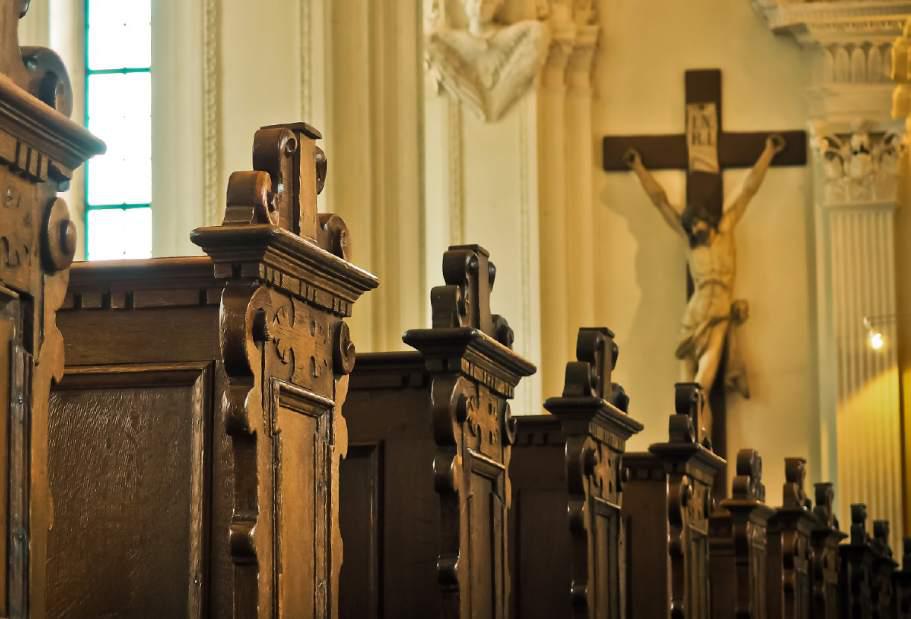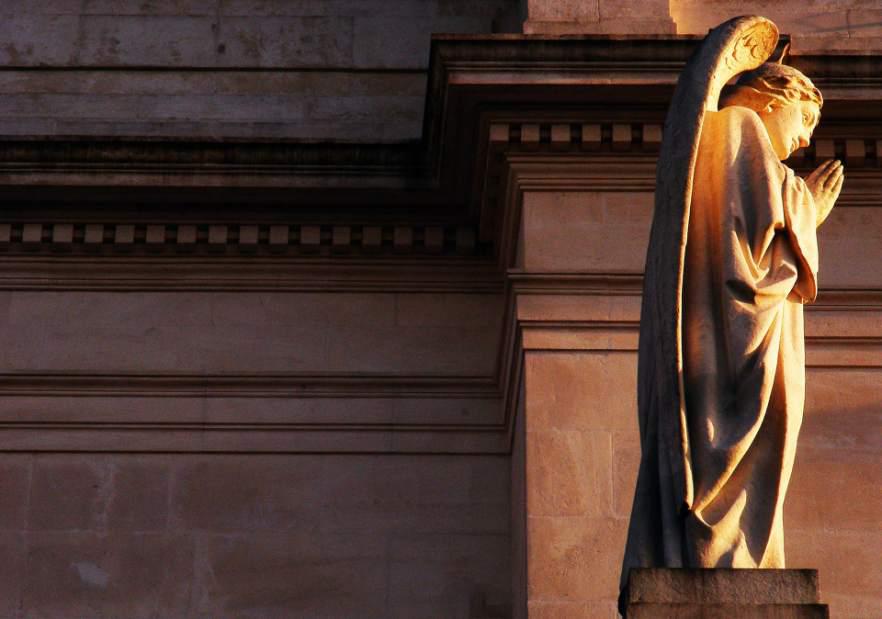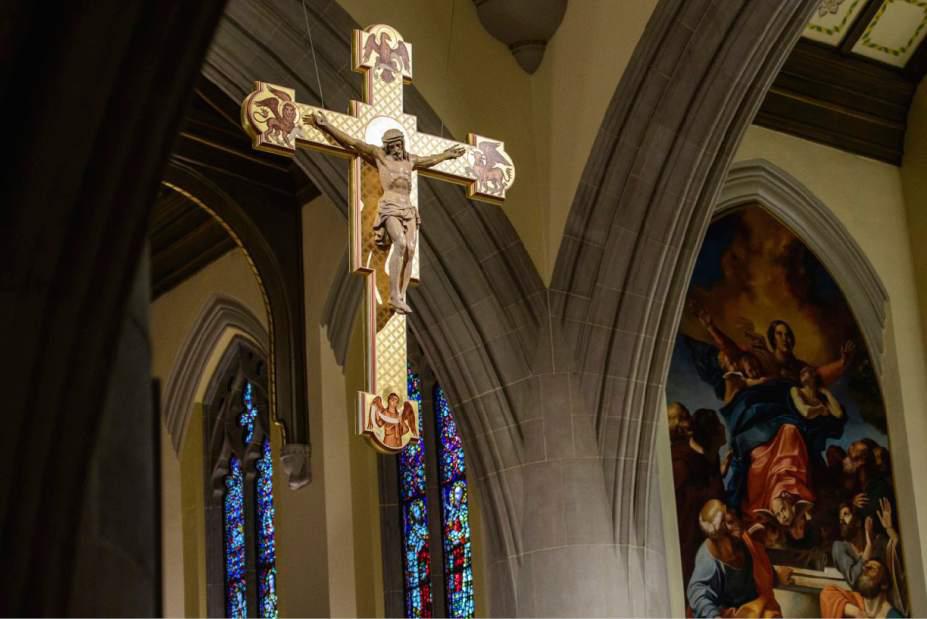|
Live: Pennsylvania AG talks about grand jury report on church sex abuse
By Debra Erdley
[with video] A Pennsylvania judge on Tuesday released a highly anticipated but partly redacted grand jury report that purports to lift a veil of secrecy that protected more than 300 "predator priests" across six Pennsylvania dioceses for nearly 70 years. The nearly 900-page report was edited to black out the names of 13 clergy members who filed legal objections, details decades of graphic allegations of sexual abuse and cover-ups in the Greensburg, Pittsburgh, Harrisburg, Erie, Allentown and Scranton dioceses. One of the names stricken from the report is Lawrence Brandt, who served as bishop of the Greensburg diocese from 2004-15. "This petitioners and for time, some of the diocese, sought to prevent the entire report from ever seeing the light of day. In effect, they wanted to cover up the cover up," Shapiro said in a news conference from his Harriburg office. "Shamefully, these petitioners still don't have the courage to tell the public who they are." Shapiro's office led the grand jury investigation. The report names 301 "predator priests," Pennsylvania Attorney General Josh Shapiro said. It includes 20 priests who worked in the Greensburg diocese and 99 from the Pittsburgh diocese, he said. The grand jury received files on more than 400 priests but didn't name names if the information was "too scanty" to make a reasonable determination, Shapiro said. "Let me be very clear: My office is not satisfied with the release of a redacted report. Every redaction represents an incomplete story of abuse that deserves to be told," he said. "You can be certain that we will fight vigorously to remove ever redaction and tell every story of abuse," he said. Diocesan leaders received advance copies of the report in May. They warned it would be shocking and sobering. The report states: • "Most of the victims were boys; but there were girls, too. Some were teens; many were prepubescent. Some were manipulated with alcohol or pornography. Some were made to masturbate their assailants, or were groped by them. Some were raped orally, some vaginally, some anally. But all of them were brushed aside, in every part of the state, by church leaders who preferred to protect the abusers and their institution above all." • "As a consequence of the cover-up, almost every instance of abuse we found is too old to be prosecuted. But that is not to say there are no more predators. This grand jury has issued presentments against a priest in the Greensburg diocese and a priest in the Erie diocese, who has been sexually assaulting children within the last decade. We learned of these abusers directly from 1 their dioceses — which we hope is a sign that the church is finally changing its ways. And there may be more indictments in the future; investigation continues." Greensburg details The grand jury report contains the following segments detailing allegations in the Greensburg diocese: • "In the Diocese of Greensburg, a priest impregnated a 17-year-old, forged the head pastor's signature on a marriage certificate, then divorced the girl months later. Despite having sex with a minor, despite fathering a child, despite being married and being divorced, the priest was permitted to stay in ministry thanks to the diocese's efforts to find a 'benevolent bishop' in another state willing to take him on. Another priest, grooming his middle school students for oral sex, taught them how Mary had to 'bite off the cord' and 'lick' Jesus clean after he was born. It took another 15 years, and numerous additional reports of abuse, before the diocese finally removed the priest from ministry." • The 36-page section on the Greensburg diocese identifies three church leaders who, while not bishops, played an "important role" in the diocese's handling of allegations of priest sexual abuse — the Rev. Roger Statnick, the Rev. Lawrence Persico (current bishop of Erie) and Monsignor Thomas Klinzing. • The section identifies 20 offender priests, 19 of whom are named and one who is identified as "Greensburg Priest #1." In addition, the Greensburg Diocese included the Revs. Michael Biena and James Clark in its list. Biena is deceased. • Of the 19 named priests, three — the Revs. Edmond A. Parrakow, Raymond Lukac and Robert Moslener — are analyzed by the report as "examples of institutional failure." • Parrakow, according to the report, was allowed to come to the Greensburg diocese from New York in 1985 after admitting to molesting approximately 35 boys over 17 years. A doctor diagnosed Parrakow as having pedophilia. "There is absolutely no doubt in my mind," the doctor reported, according to the grand jury. Bishop William Connare was warned that Parrakow should be "assigned with at least one other priest in a parish setting that does not have a school," the report states. • Priests in the Greensburg diocese groomed, fondled and had sex with boys and girls, the grand jury found. The report directly states: • "Evidence showed that diocesan administrators, including bishops, had knowledge of this conduct and regularly permitted priests to continue in ministry after becoming aware that a complaint of child sexual abuse had been made against them. This conduct enabled the offenders and endangered the welfare of children." • "The diocese made settlements with victims and had discussions with lawyers regarding the sexual abuse of children by its priests. These settlements often contained confidentiality agreements forbidding victims from speaking about such abuse under threat of some penalty, such as legal action to recover previously paid settlement funds. • "Diocesan administrators, including bishops, dissuaded victims from reporting abuse to law enforcement." • "Diocese regularly failed to independently investigate allegations of child sexual abuse in order to avoid scandal and possible civil and criminal liability on behalf of the Diocese, accused priests and diocesan leadership." Pittsburgh details • Of the 90 alleged offenders identified in the Pittsburgh diocese, eight of the names were redacted in the report. An additional nine priests were identified only by a number. • The report highlighted three examples of what it called institutional failure involving three priests: Ernest Paone, George Zirwas and Richard Zula. The examples "provide a window into the conduct of past Pennsylvania bishops and the crimes they permitted to occur on their watch." • "During the course of this investigation, the grand jury uncovered a ring of predatory priests operating within the diocese who shared intelligence or information regarding victims as well as exchanging the victims amongst themselves. This ring also manufactured child pornography on diocesan property, including parishes and rectories. This group included: Zirwas, Francis Pucci, Robert Wolk, and Richard Zula. This group of priests used whips, violence and sadism in raping their victims." • In one case, the report said Zirwas, Zula and two other priests, including Zula, took a boy identified as George to the rectory of a Munhall parish and asked the him to stand on a bed and remove his clothes as they discussed the image of Christ on the cross. Then they took Polaroid pictures of the boy. The alleged victim reported that the Polaroids were added to a collection of similar photos of other teenage boys. The alleged victim said the ring of predatory priests gave gifts to boys including gold cross necklaces. "They were a visible designation that these children were victims of sexual abuse. They were a signal to other predators that the children had been desensitized to sexual abuse and were optimal targets for further victimization," the grand jury wrote. • Priests in the Pittsburgh diocese groomed, fondled and had sex with boys and girls, the grand jury found. • "The Grand Jury uncovered evidence of sexual abuse of minors committed by dozens of priests and, in one case, an aspiring priest, in the Diocese of Pittsburgh." • "Evidence also showed that diocesan administrators, including the bishops, had knowledge of this conduct yet regularly placed the priests in ministry after the diocese was on notice that a complaint of child sexual abuse had been made. This conduct was enabling to the offenders and endangered the welfare of children." • "The Diocese of Pittsburgh today is not the church that is described in the grand jury report. It has not been for a long time. Over the course of the last 30 years, we have made significant changes to how we prevent abuse and report allegations," Bishop David Zubik said. He continued that "there is no priest or deacon in public ministry today in the Diocese of Pittsburgh with a substantiated allegation of child sexual abuse against him." The investigation A 23-member grand jury sat in Pittsburgh and investigated allegations against the six dioceses for 22 months. The panel cited the deaths of many clergy named in secret church documents and a statute of limitation that excluded others from criminal prosecution in its decision to name names. "We are sick over all the crimes that will go unpunished and uncompensated. This report is our only recourse. We are going to name their names and describe what they did — both the sex offenders and those who concealed them. We are going to shine a light on their conduct because that is what the victims deserve," the panel wrote in the report introduction. Over 1,000 child victims were identified by the investigation, though the grand jury report notes that jurors believe that the number was in the thousands, Shapiro said. Two priests — one each in the Greensburg and Erie dioceses — have been charged criminally as a result of the investigation. But the grand jury report details numerous tales of lives shattered and faith destroyed relayed from the testimony of dozens of victims and culled from more than half a million documents that had been secreted away in church archives. While expressing remorse for past practices, church leaders stressed that the church's approach to allegations of sexual predators in the clergy has changed dramatically. Today, they insist the church prioritizes the protection of children and has a zero tolerance for abuse. Nationally, experts say failure to weed out sexually abusive priests has cost the church $4 billion in legal settlements since 1950 and forced 14 dioceses across the country into bankruptcy. As recently as last year, the U.S. Conference of Catholic Bishops reported settlements and other costs associated with abuse claims totaled $212.9 million. Mary Gautier a senior research associate at Georgetown University's Center for the Study of the Apostolate, said the release of major reports on abuse in Catholic dioceses and parishes elsewhere seems to trigger an uptick in allegations. Bishops in all six dioceses endorsed publicly releasing the report, with leaders in Erie and Harrisburg already having released the names of those credibly accused. The battle over the report reached a boiling point this summer as clergy named but not charged criminally mounted legal challenges, saying it infringed on their rights to reputation and due process. The Supreme Court agreed to release an interim report edited to remove their names and scheduled a hearing on their arguments for September. Going forward According to a news release from Shapiro, the grand jury recommended the following changes to Pennsylvania law: • Eliminate the criminal statute of limitations for sexually abusing children. Current law permits victims to come forward until age 50. • Create a "civil window" so older victims may now sue for damages. Current law gives child sex abuse victims 12 years to sue, once they turn 18. Victims 30 or older have two years to file lawsuits. The grand jury called that "unacceptable" and recommends a limited "window" offering victims a chance to be heard in court for an additional two years. • Clarify penalties for a continuing failure to report child abuse. The grand jury recommends changing the abuse reporting law to clarify the duty to report abuse. The new language imposes a continuing obligation to report "while the person knows or has reasonable cause to believe the abuser is likely to commit additional acts of child abuse." • Specify that civil confidentiality agreements do not cover communications with law enforcement. The grand jury wrote that the church has used confidentiality agreements as a way to silence abuse victims from speaking publicly or cooperating with law enforcement. The grand jury proposes a new statute which clearly states that no past or present non-disclosure agreement prevents a victim from talking to police. Additionally, future agreements should state contact with police about criminal activity is permitted.
|
.
Any original material on these pages is copyright © BishopAccountability.org 2004. Reproduce freely with attribution.


